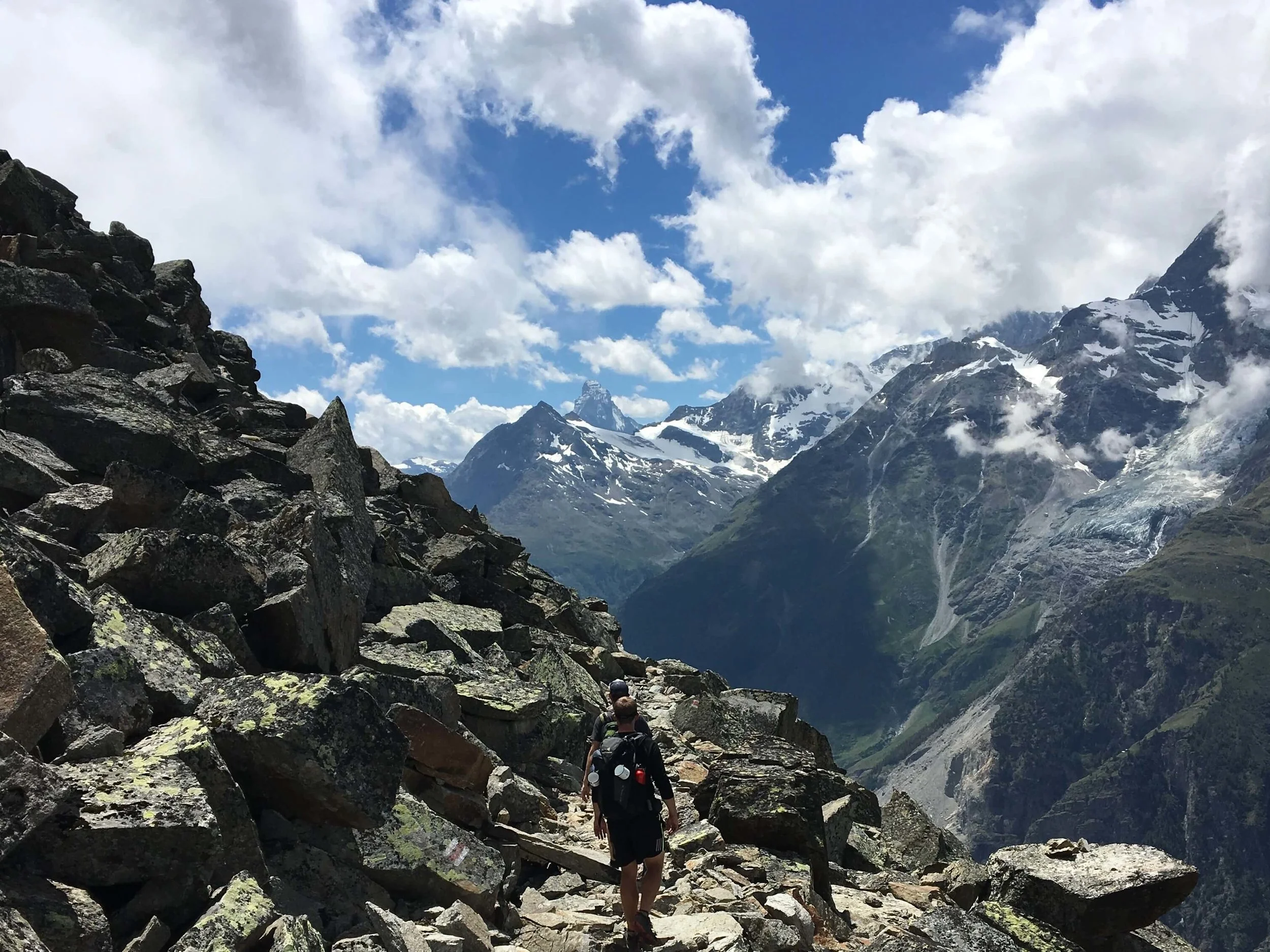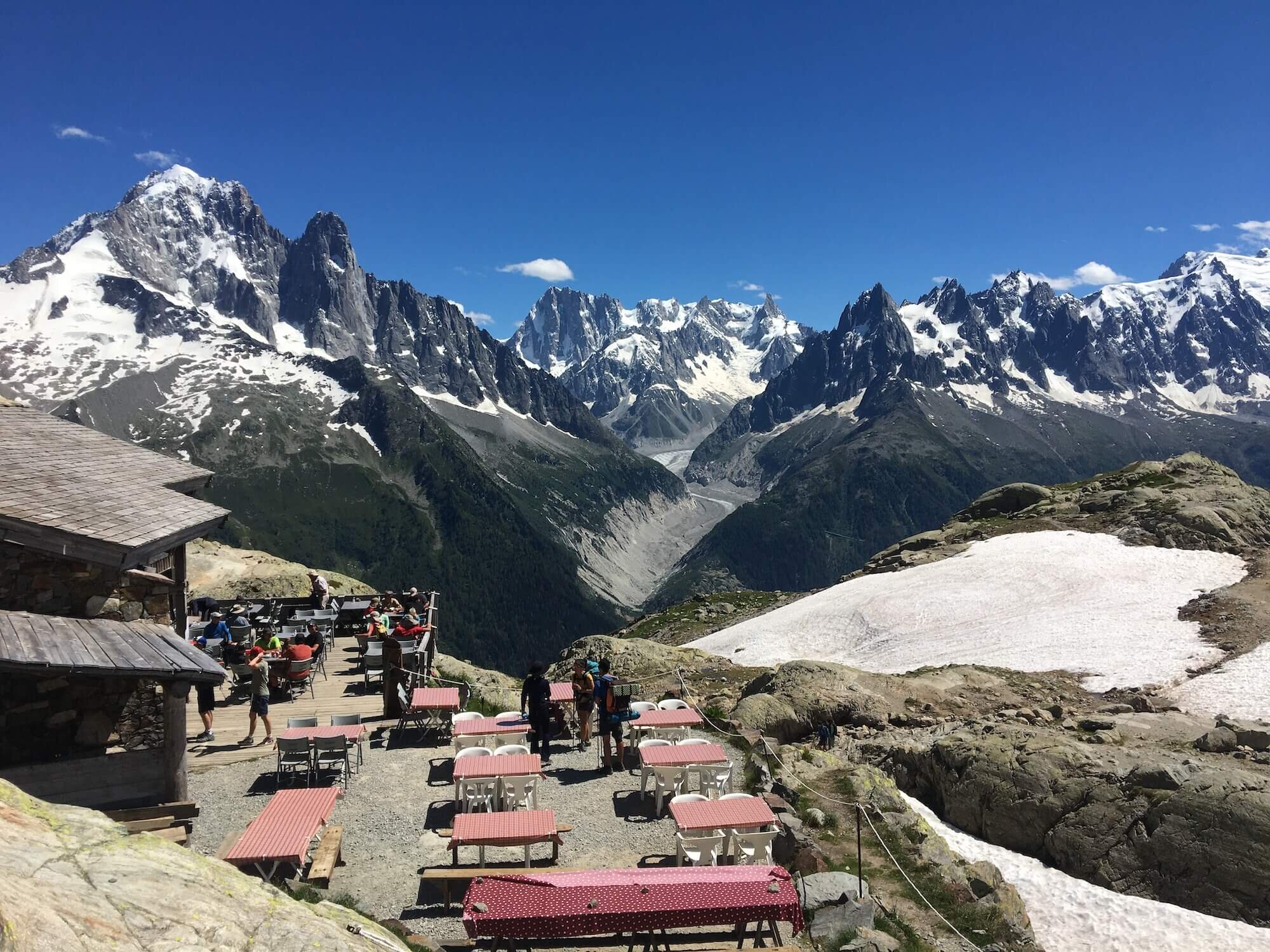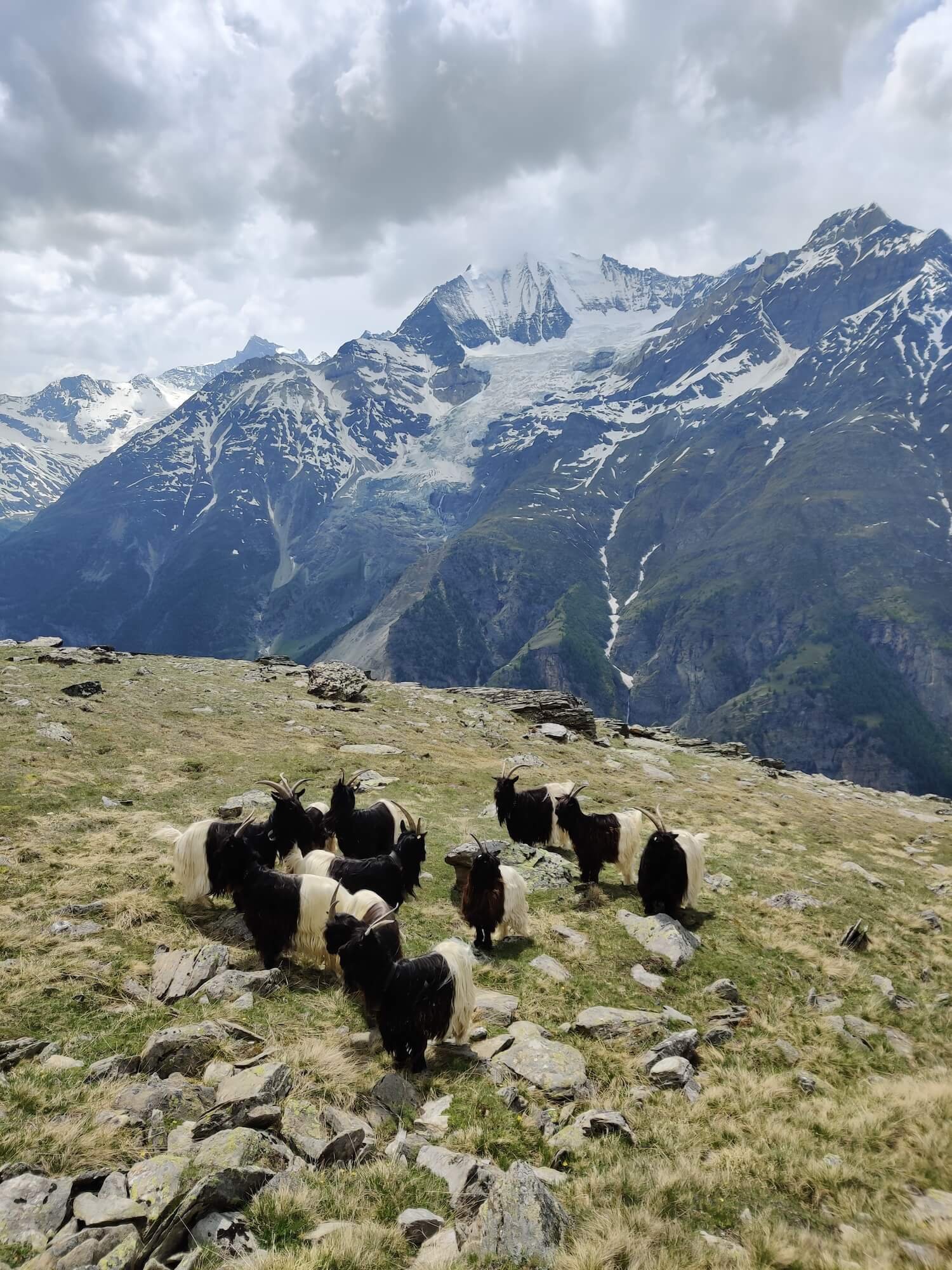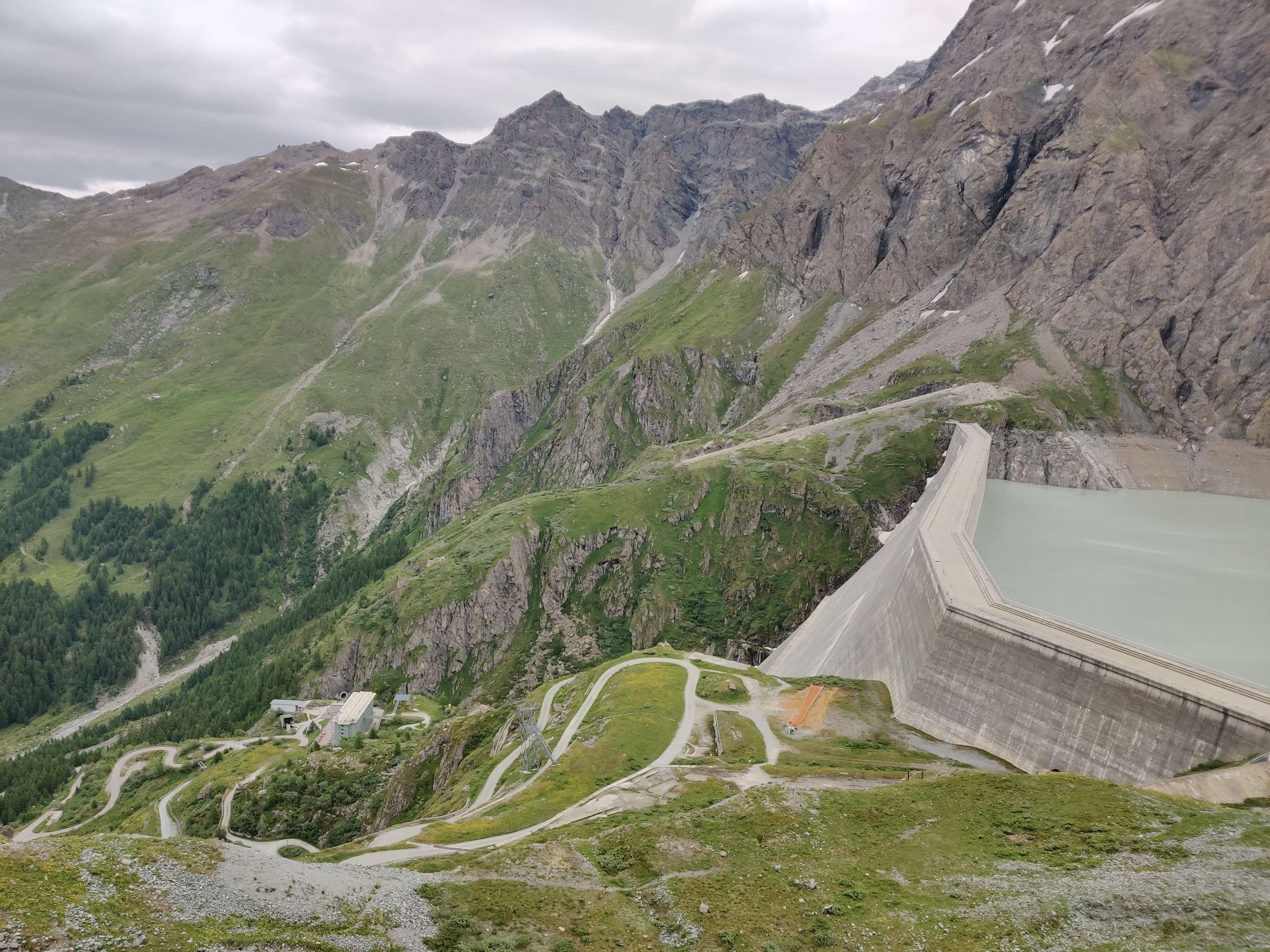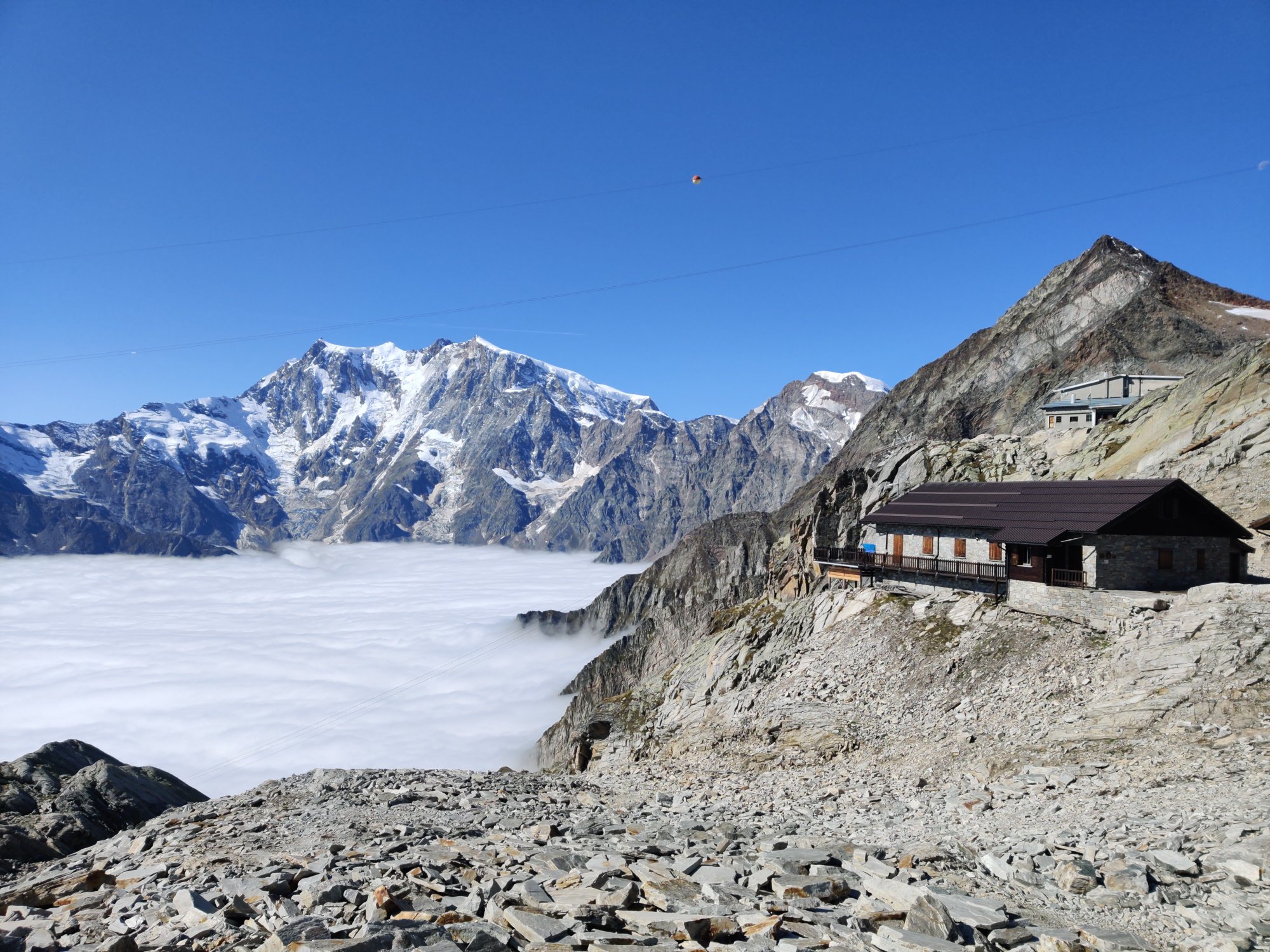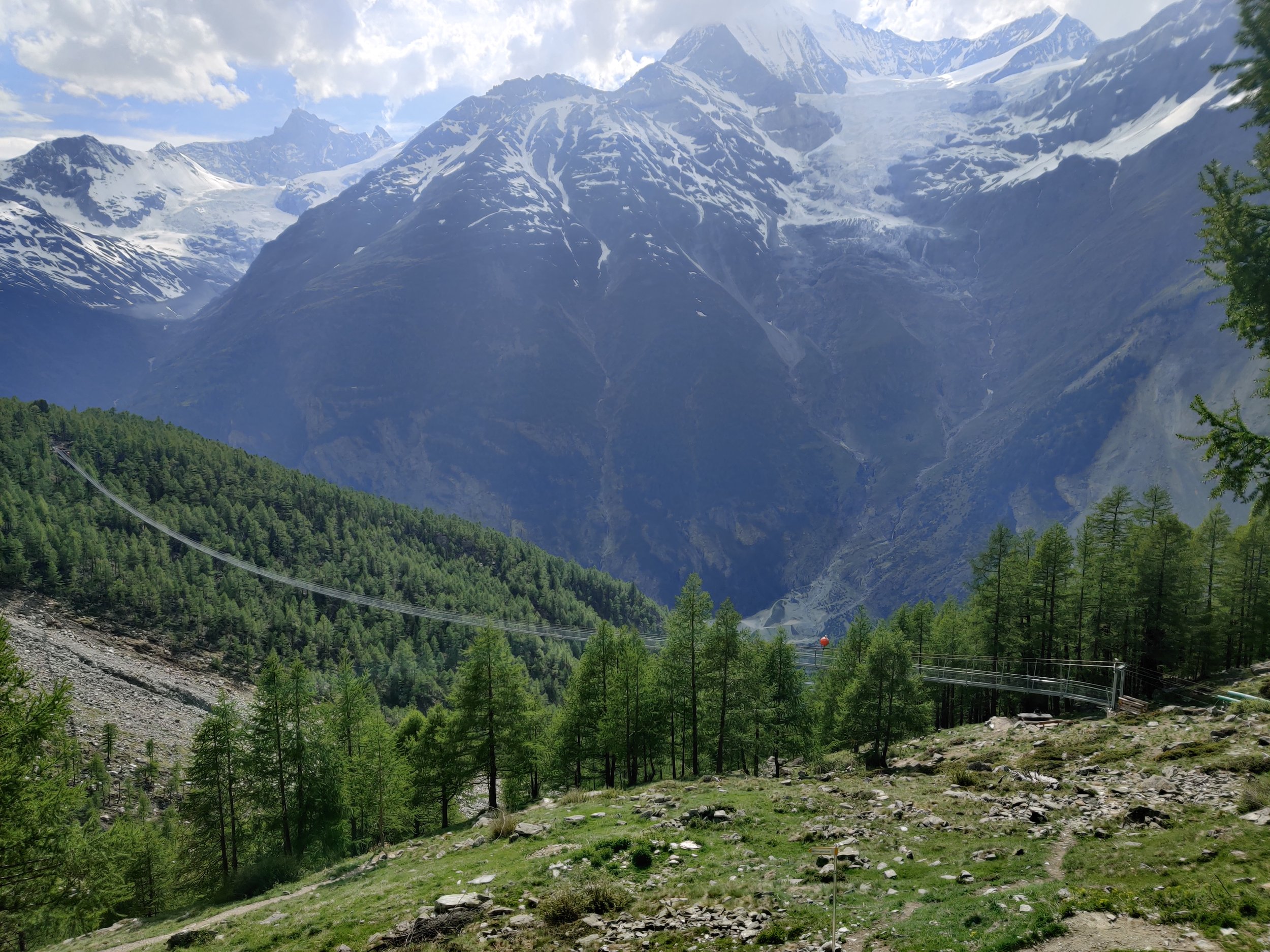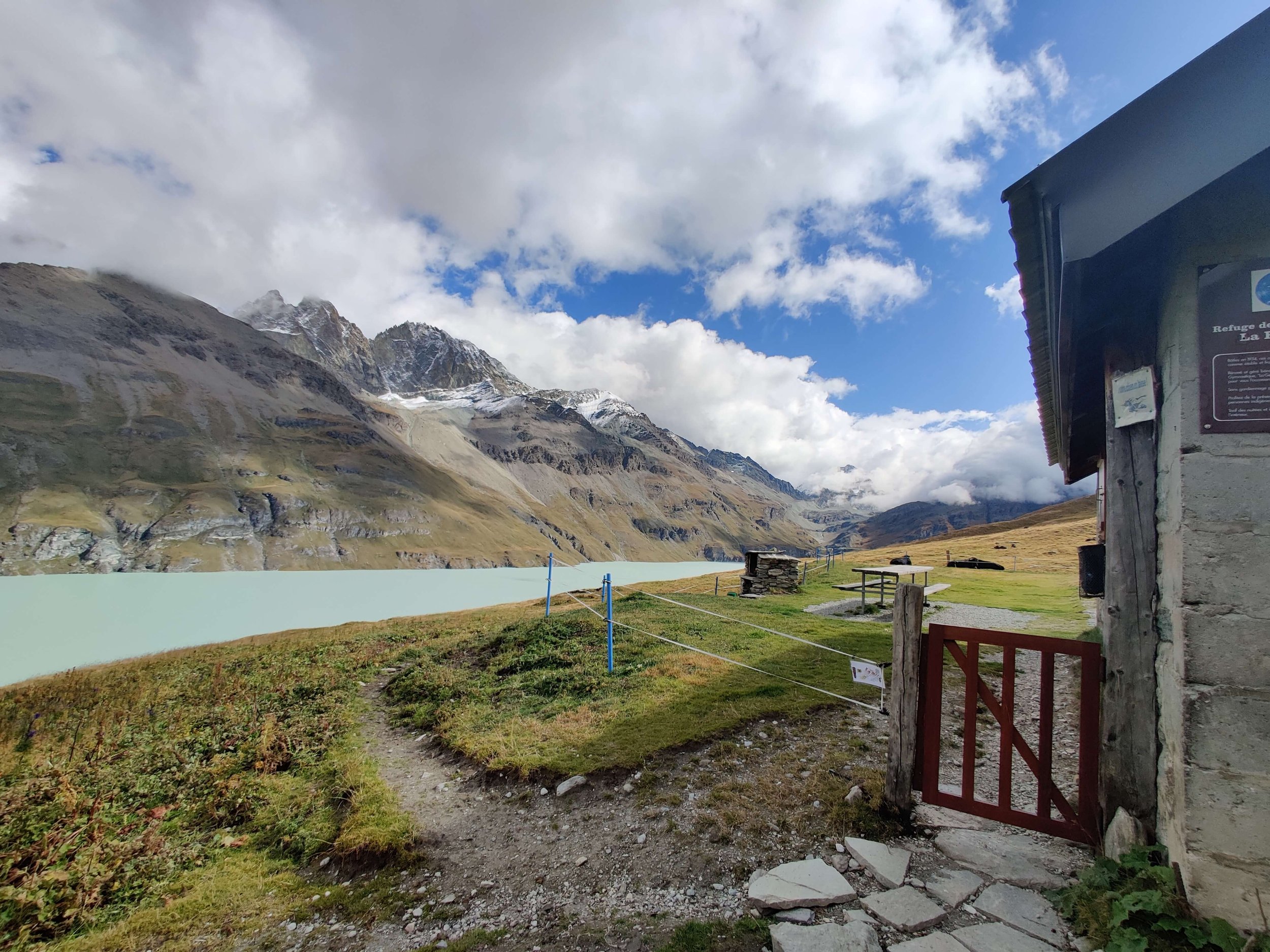Graeme McIlveen, Fergus Ring and Frank Osborn from Australia hiked the Walker’s Haute Route in 2019 to build their fitness, multi-day hiking experience, and friendship.
Lifelong friends make great hiking comrades.
“As three friends from Australia, aged 72, 69 and 63, we got to know each others’ abilities, strengths and weaknesses while hiking the Kumano Kodo pilgrimage trail in Japan in 2017, and were keen to participate in another trek. All three of us have past experience of different cultures through our work and on our own individual treks, and liked the thought of getting fit for another challenge. We also wanted to remain as peripheral adventurers (and without stressing our spouses too much). The Walker’s Haute Route sounded like a good fit.
This trail was going to be the longest trek that any of us had undertaken. We planned for a 14-day journey, knowing that any disappointment or setback of the day could be compensated by a nice beer, followed by a wine and a Swiss dinner afterwards.
Enjoying a well deserved drink after a tough day on the trail.
We were committed to commencing our trek rather early in the season and unfortunately, we were exposed to late Spring snow causing considerable concern, as none of us had prior experience alpine trekking. However, we planned with optimism. We never view a trek as a failure if there is still culture, amazing vistas and good friendship to be included.
With the help of The Hiking Club, we could assess the next day’s section of trail and judge our capability to deal with the particular conditions of the pass we were to cross, or choose an alternative transport option and go by car, bus or train to the next valley. There were a couple of sections that really tested the height of our skill level, in particular, the deep snow and steep incline to Cabane de Mont Fort.
Col du Tsate, Walker’s Haute Route.
Battling the late spring snow over the high alpine passes on the Walker’s Haute Route.
At times like these, the three of us were able to discuss and compromise on our eagerness versus safety and always stayed together. One of us had the skill of timing and goal setting, another had excellent map reading skills, and another had the quality of patience and observing his surroundings for information that the other two were too busy to recognise. Together we made a great team. A trek with good friends allows for easy camaraderie, but also for times of self-reflection and peace with oneself.
At the end of the trek we felt a sense of achievement knowing that it was not easy, but a result of planning, training and making informed choices to achieve a safe outcome. To this day, we remain good friends and laugh about the funny events and silly occurrences that are always unexpected but fondly remembered.”
With a backdrop of the Grand Combin massif, Cabane de Louvie is a spectacular hut to stay in overnight.
Graeme, Fergus and Frank’s story features in our book, Modern Adventurers: hiking stories from the Alps. You can meet hikers around the world and hear their stories atThe Hiking Club community, join here!


